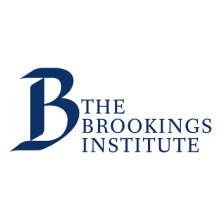In collaboration with think tank partners on the continent, the Brookings Africa Growth Initiative team recently published a series of reports examining industries without smokestacks (IWOSS) in various countries in the region. For the purpose of the research, IWOSS activities are defined as those that are tradable, have high value added per worker relative to average economywide productivity, exhibit capacity for technological change and productivity growth, and can absorb large numbers of moderately skilled labor.
The research seeks to widen the policy options for structural change and job growth in Africa, especially among African youth. Indeed, sub-Saharan Africa will need to create 18 million jobs each year until 2035 to accommodate youth market entrants Therefore, the AGI team and its partners have examined the employment creation potential of IWOSS in Africa to assess whether these subsectors can successfully contribute to addressing youth unemployment in the region. As part of the larger study, AGI published case studies examining whether and how IWOSS might improve youth employment prospects in Ghana and Senegal.
In short, both case study teams find that IWOSS sectors will create more jobs in coming years than other sectors. Figure 1 shows the projected share of new jobs created by 2035 by sectoral grouping: Notably, in both Ghana and Senegal, IWOSS sectors are projected to create more than half of new jobs by the year 2035.
Figure 1. Projected share of new jobs created by 2035 by sectoral grouping
Source: Coulibaly, B. and Page, J. Addressing youth unemployment in Africa through industries without smokestacks: A synthesis on prospects, constraints, and policies. (Washington, DC: Brookings Institution, 2021).
While the IWOSS definition includes a number of different sectors, the case study teams identified the subsectors in which their countries have a distinct comparative advantage. In Senegal, the team examined how horticulture, agro-industry, and tourism might generate much-needed jobs for youth. In Ghana, the team examined how agro-processing and tourism could accomplish this important task.
Related Content
In Senegal, the research shows that a thriving IWOSS sector can stimulate the economy and provide sustainable opportunities for the ever-growing working-age population; however, before Senegal can reach achieve this goal, it must address specific constraints that affect the business environment throughout the country. In Ghana, the research suggests that the same can be done if the country addresses the regulatory environment in which firms operate. Research also showed that IWOSS sectors in both countries have higher output per worker than non-IWOSS sectors. This higher productivity rate is important because higher productivity can be accompanied by higher wages.
As noted above, the research teams predict that IWOSS sectors will create more than half of the new jobs in these countries by the year 2035. More specifically, in Senegal, the case study authors project that, by 2035, IWOSS sectors will make up 52.8 percent of total employment, versus 3.3 percent from manufacturing and 44.0 percent from all other sectors (Table 1).
Table 1. Projected GDP and labor demand, Senegal
Source: Beye, Dia Gueye, Mbaya, and Mbaye. Employment creation potential labor skills requirements, and skills gaps for young people: A Senegal case study. (Washington, DC: Brookings Institution, 2021).
Similar trends can be seen in Ghana (Table 2). The Ghana team project that, by 2035, IWOSS sectors will make up 53.6 percent of total employment, versus 9.3 percent from manufacturing and 37.1 percent from all other sectors.
Table 2. Projected GDP and labor demand, Ghana
Source: Aryeetey, Baffour, and Turkson. Employment creation potential labor skills requirements, and skills gaps for young people: A Ghana case study. (Washington, DC: Brookings Institution, 2021).
For more a more detailed discussion of IWOSS in Senegal, please see the full case study, COVID update, and summary blog. For more on the Ghana case study, see the full case study and summary blog.





